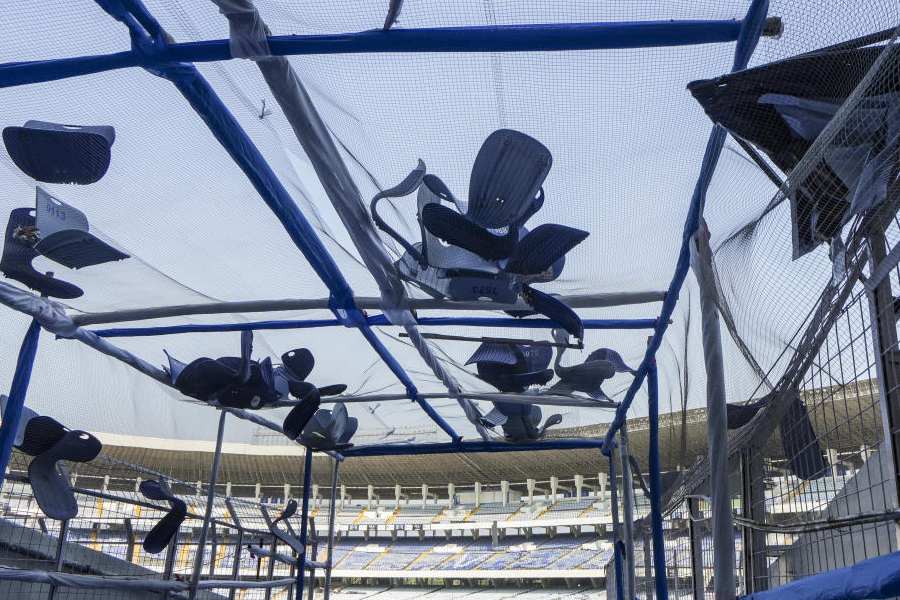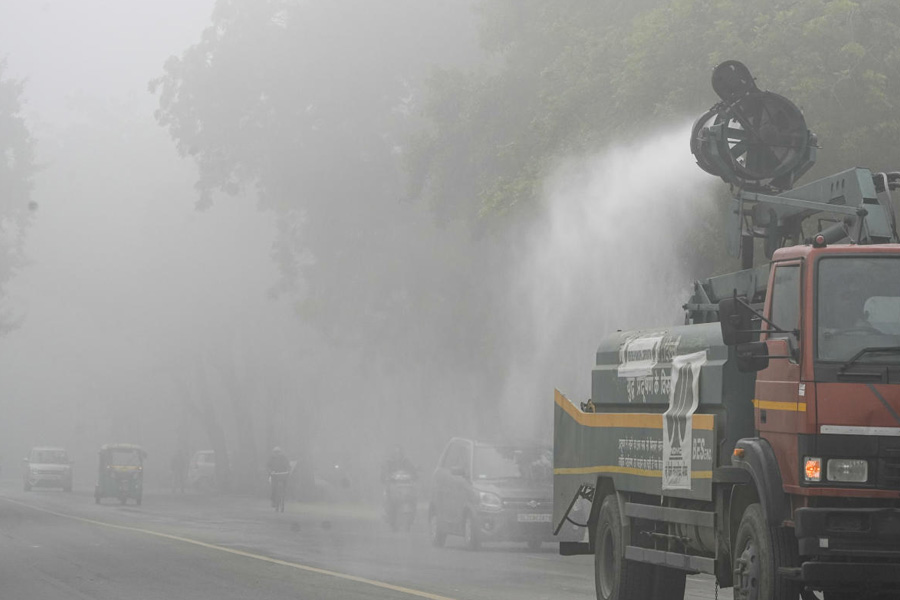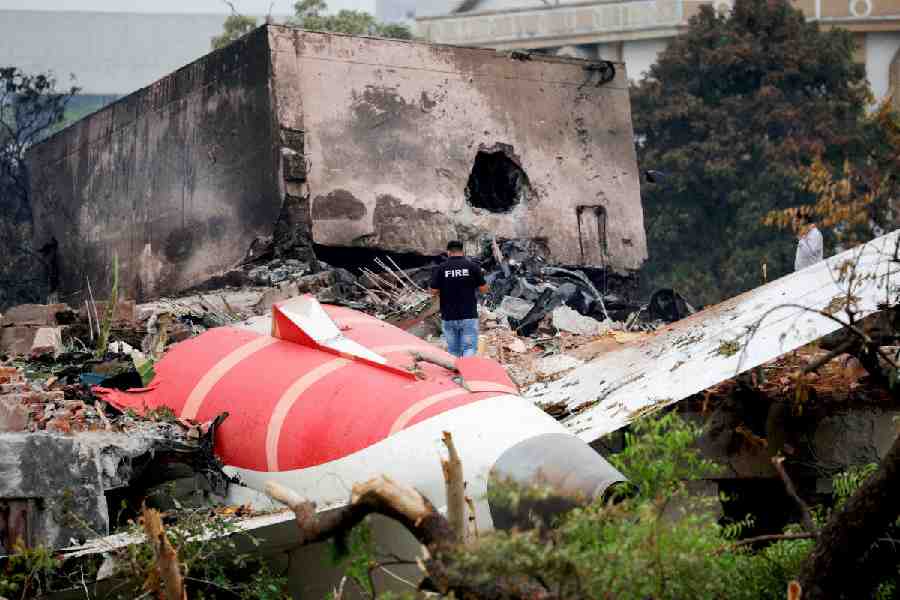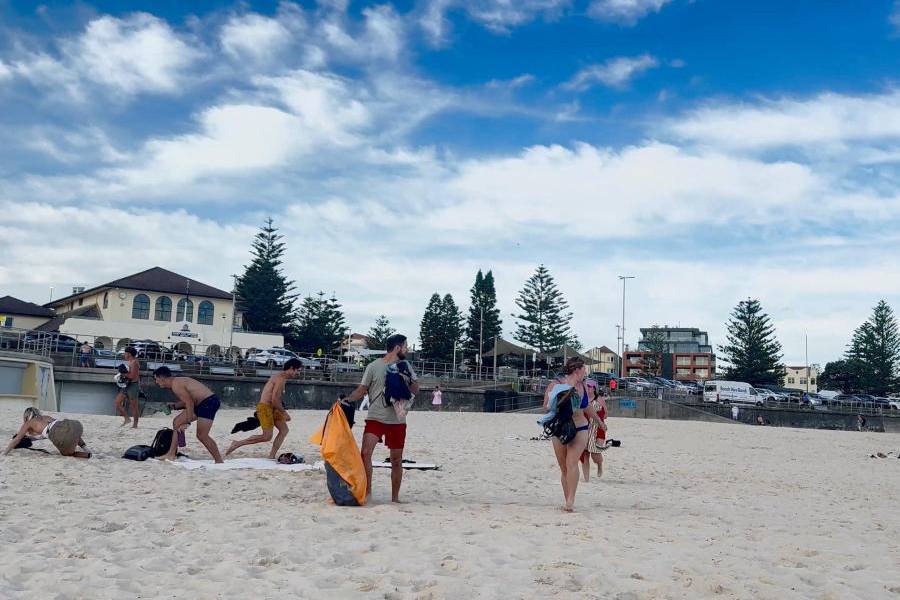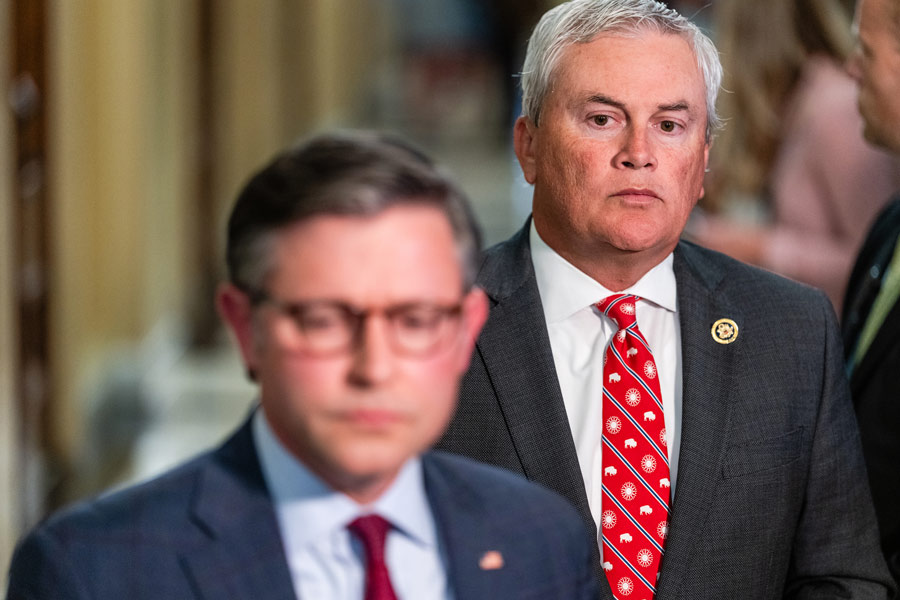A gurgling stream, chirping birds and the whirring of excavators are the only signs of life in this vast wasteland.
One year to the day since the devastating landslide in Wayanad, the three villages of Punchirimattom, Mundakkai and Chooralmala still straddle a ravaged landscape of abandoned houses whose residents are either dead or displaced and buildings mangled beyond recognition. Homes, churches and mosques have been overrun by weeds and wild bushes.
In Mundakkai, the Punnapuzha river cuts its way through huge boulders washed down the hills by the devastating landslide triggered by heavy rain on July 30 last year. A Bailey bridge constructed by the army after the village bridge collapsed during the disaster that claimed at least 289 lives is the only way to reach Mundakkai now.
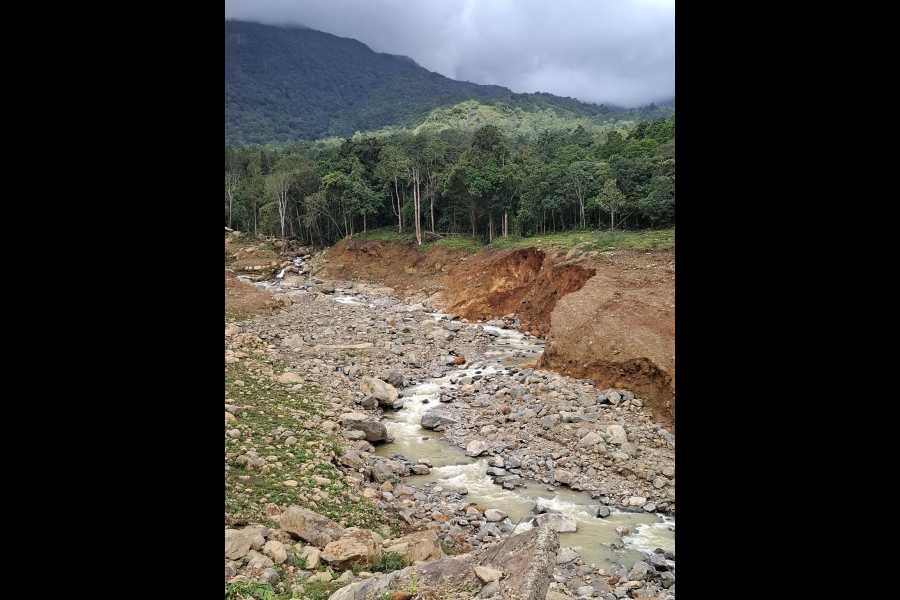
Quite flows the Punnapuzha river amid the landslide affected areas where scores of houses remained there once upon a time. Post the landslides, the river has not been flowing in its right course
The Kerala government is constructing a model township in district headquarters Kalpetta, 30km from Mundakkai, to rehabilitate the landslide victims. Only one house has come up so far.
D.R. Meghasree, the Wayanad collector, tells The Telegraph that the past year has been a whirlwind of activities as various departments work to restore a semblance of life to the three villages. As of now, Punchirimattom, Mundakkai and Chooralmala are uninhabitable and deemed too risky for human settlement in case another natural calamity strikes.
It was down the “smiling slopes” of Punchirimattom that boulders and sludge came crashing down during the landslide, leaving in their wake the wrecked lives of more than 3,000 people. They were fast asleep when the rocks, each weighing more than 100 tonnes, and debris tore through the village. In no time, the devastation assumed catastrophic proportions.
With tourists flocking to ground zero of the devastation in the run-up to the first anniversary of the tragedy, the Wayanad district administration has started a pass system to curtail the inflow. When it rains, the authorities immediately close the area for fear of any untoward incidents. This has dashed the hopes of hoteliers whose properties are located in neighbouring areas untouched by the landslide.
“My hotel — Bismi Mess — is at the other end of the Bailey bridge from Mundakkai. My home is outside the affected area, so we are alive. But my livelihood has been affected. My 40-year-old hotel had suffered some damage in the catastrophe. I have done the repairs, but now heavy and incessant rain is playing spoilsport. The authorities have closed the road towards the Bailey bridge. There are five families who are totally dependent on me,” hotel owner Basheer Padinjarel, 53, tells The Telegraph.
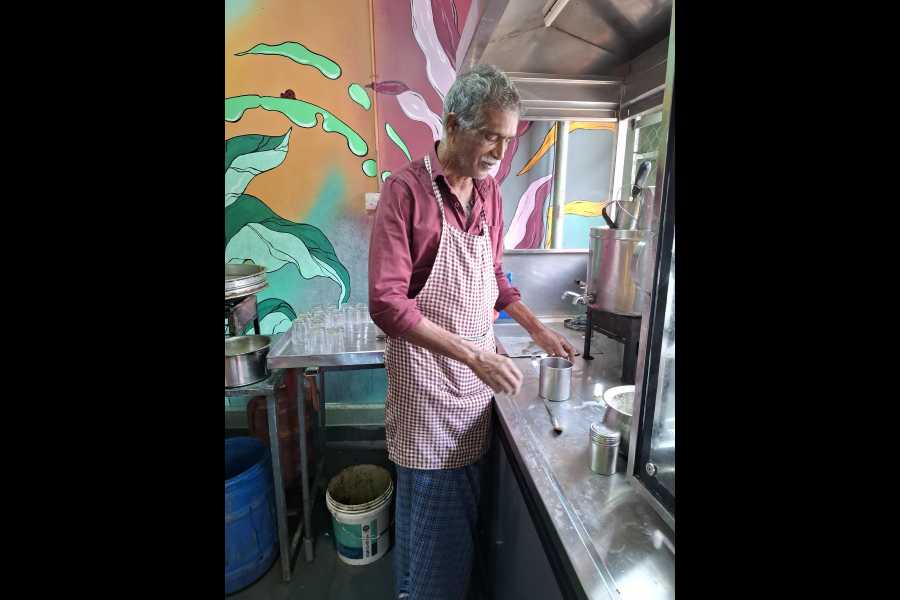
Basheer Padinjarel at his Bismi Hotel at Mundakkai on Tuesday
As this correspondent climbed the hills of Mundakkai, the sound of two massive excavators broke the eerie silence. Over the past two months, the excavators have been bringing the Punnapuzha river back to its pre-landslide course by removing the boulders and debris that have blocked its way.
“We have been advised to correct the course of the river, which flows 4km downhill from Punchirimattom. Also, scores of giant boulders have to be blasted. Now, the vast landscape has become the exclusive haunt of wild animals like elephants, wild boars, porcupines and snakes. These were once densely populated villages,” says Afzal, an employee of the Uralungal Labour Contract Cooperative Society Ltd.
Fresh elephant dung pockmarks the hilly terrain. C.H. Sulaiman, a watcher at the Harrisons Malayalam tea plantation, looks forlorn when this newspaper approaches him. His intuition saved his family from the landslide, he says.
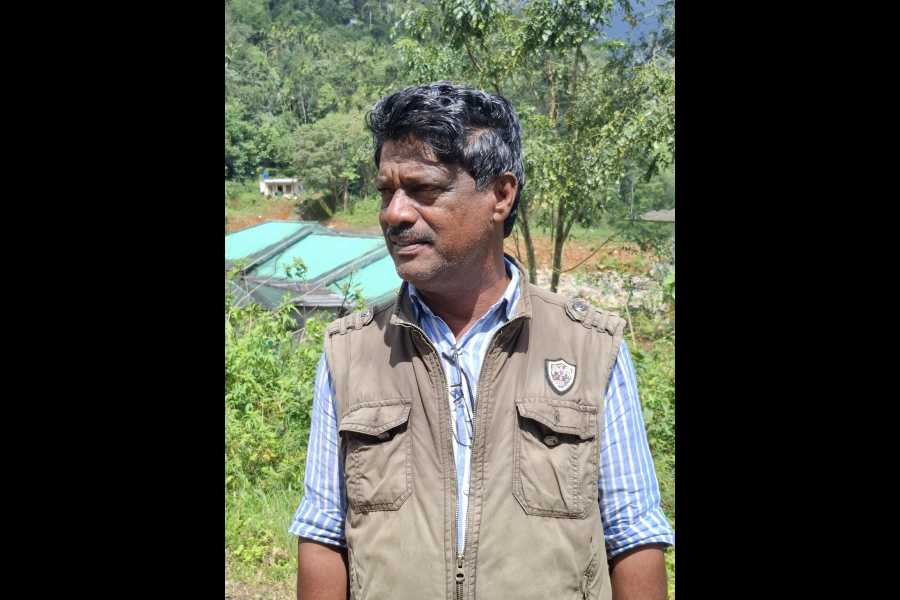
C H Sulaiman, watcher at the Harrisons Malayalam Plantation at Mundakkai
“I could sense approaching danger. Me and my family crossed the river the afternoon before the landslide and put up at the homes of relatives elsewhere. But 11 of our neighbours died as they decided to stay back,” Sulaiman says.
Two of the four tea estates in the area have reopened and labourers, many of whom were once local residents, come and go for work.
The abandoned Vellamala Higher Secondary School and Mundakkai LP School remain mute witnesses to the tragedy.
A bearded Sivaprasad says his 20 cows and goats once had a shed but now roam around in desolate areas. A little away at the Puthumala public graveyard, a few people are busy erecting a roof ahead of the first anniversary commemoration event. The Meppadi panchayat has renamed the graveyard July 30 Hrudaya Bhoomi. As many as 59 landslide victims and 213 body parts are buried there.
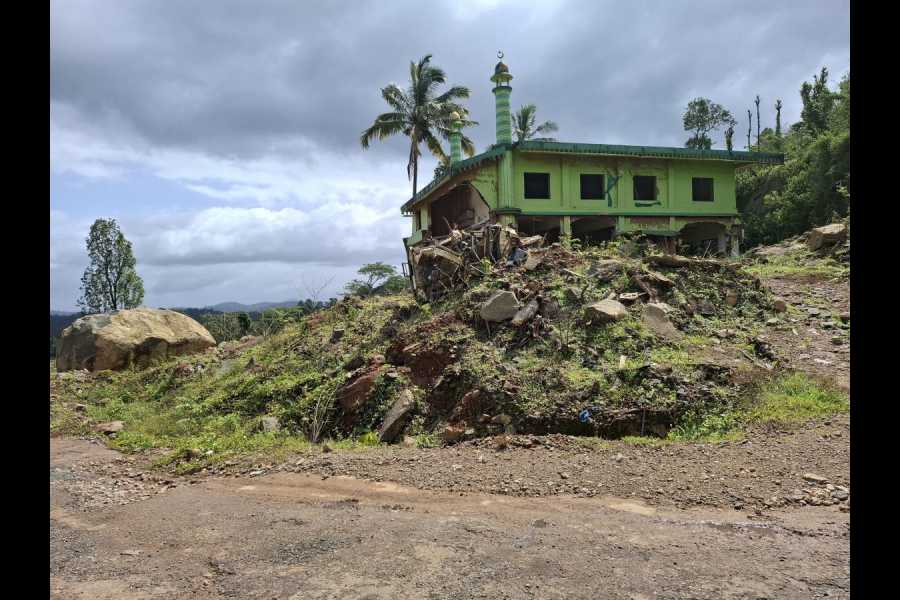
A dilapidated mosque and a mangled remains of an automobile at Chooralmala. A huge boulder is also seen which came crashing from the other side of the road
The first model house at the township in Kalpetta is receiving finishing touches. Each house is on 10 cents of land. Chief minister Pinarayi Vijayan has directed the Wayanad administration to complete the township by December-end.
Meghasree, the district collector, says: “Life has been tough since the Wayanad landslides on July 30 last year. I’d taken charge on July 10. Even now when I see an overcast sky, like everyone else here I get apprehensive. But I can say that we have fought back and gradually overcome the crisis.”





